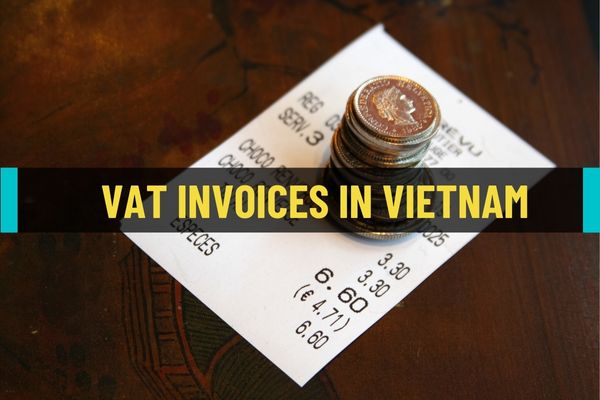Reducing VAT to 8%: How do businesses and business households calculate VAT by the deduction method?
- Enterprises, business households that calculate VAT according to the deduction method, how to issue VAT invoices in Vietnam to be reduced to 8%?
- How much is the VAT reduction for goods and services that make VAT invoices in Vietnam according to the tax credit method?
- What is the time of making VAT invoices in Vietnam?
Enterprises, business households that calculate VAT according to the deduction method, how to issue VAT invoices in Vietnam to be reduced to 8%?
According to the provisions of Article 2 of Decree 41/2022/ND-CP (amended and supplemented with Article 1 of Decree 15/2022/ND-CP), regulations on the issuance of VAT reduction invoices are as follows:
- For business establishments that calculate value-added tax by the credit method, the value-added tax rate of 8% for goods and services shall be applied:
+ When making a value-added invoice for the provision of goods and services subject to value-added tax reduction, write "8%" at the value-added tax rate line; value added tax; total amount to be paid by the buyer. Based on value-added invoices, business establishments selling goods and services shall declare output value-added tax, and business establishments purchasing goods and services shall declare and deduct input value-added tax. according to the reduced tax amount written on the value-added invoice.
+ If a business establishment under this regulation applies different tax rates when selling goods or providing services, the value-added invoice must clearly state the tax rate of each good or service according to regulations. determined.
Thus, according to the previous regulations in Decree 15/2022/ND-CP, the invoicing of the provisions on invoice making is done:
“Business establishments must make separate invoices for goods and services eligible for VAT reduction. In case a business establishment does not issue a separate invoice for goods and services eligible for value-added tax reduction, it is not entitled to VAT reduction.
However, according to Decree 41/2022/ND-CP amending this Decree, business establishments only need to specify tax rates with different tax rates, then the value-added invoices must clearly state the tax rates of each goods and services specified above

Reducing VAT to 8%: How do businesses and business households calculate VAT by the deduction method?
Picture: Internet
How much is the VAT reduction for goods and services that make VAT invoices in Vietnam according to the tax credit method?
According to Decree 15/2022/ND-CP stipulating the tax reduction for goods and services, VAT invoices in Vietnam are made according to the credit method as follows:
Business establishments that calculate value-added tax by the credit method may apply the value-added tax rate of 8% for goods and services specified in Clause 1 of this Article.
According to Decree 15/2022/ND-CP, the subjects eligible for tax reduction are as follows:
Reduced value-added tax for groups of goods and services currently applying the tax rate of 10%, except for the following groups of goods and services:
- Telecommunications, financial activities, banking, securities, insurance, real estate trading, metals and prefabricated metal products, mining products (excluding coal mining), coke, refined petroleum, chemical products. Details are in Appendix I issued together with this Decree.
- Products and services subject to excise tax. Details are in Appendix II issued together with this Decree.
- Information technology in accordance with the law on information technology. Details are in Appendix III issued with this Decree.
- The reduction of value-added tax for each type of goods and services specified in Clause 1 of this Article shall be applied uniformly at the stages of import, production, processing, business and trade. For the sold coal products (including the case of coal mined and then screened, classified according to a closed process, then sold) subject to value-added tax reduction. Coal products listed in Appendix I to this Decree are not eligible for value-added tax reduction at other stages other than the mining stage.
- In case the goods and services mentioned in Appendices I, II and III issued together with this Decree are not subject to value-added tax or subject to 5% value-added tax under the provisions of this Decree. The Law on Value-Added Tax shall comply with the provisions of the Law on Value-Added Tax and shall not be entitled to a reduction in value-added tax.
What is the time of making VAT invoices in Vietnam?
According to Article 9 of Decree 123/2020/ND-CP stipulating the time of making invoices as follows:
- The time of making invoices for sale of goods (including sale of state assets, confiscated properties, replenishment of state funds and sale of national reserve goods) is the time of transfer of ownership or use rights. goods to the buyer, regardless of whether money has been collected or not.
- Time of invoicing for service provision is the time of completion of service provision, regardless of whether money has been collected or not. In case the service provider collects money before or while providing the service, the time of making an invoice is the time of collecting money (excluding the case of collecting a deposit or an advance to ensure the performance of the supply contract). providing services: accounting, auditing, financial and tax consulting; valuation; survey, technical design; supervision consultancy; construction investment project formulation).
- In case of multiple delivery or handover of each service item or stage, each delivery or handover must issue an invoice for the corresponding volume and value of goods and services delivered.
- Time of making invoices for some other specific cases as prescribed.
Decree 123/2020/ND-CP takes effect from July 1, 2022.
LawNet
